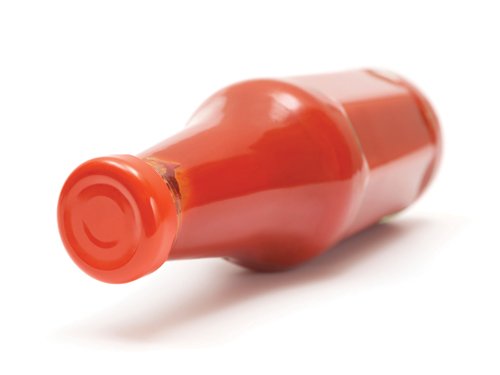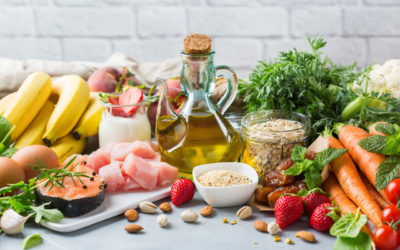Most of us eat too much sugar. On average, Americans consume 475 calories of added sugars every day (that’s 30 teaspoons), which is three or four times what’s recommended by the American Heart Association.
If you’re trying to cut back on added sugars in your diet, you’ve probably already tackled the obvious sources: sugar-sweetened beverages and desserts. But what about the less obvious sources of added sugars? It’s difficult to know how much added sugars are in most processed foods because food manufacturers aren’t required to disclose the amount in their products on the Nutrition Facts Panel. But, unless there is fruit and/ or milk (which contain naturally occurring sugars, fructose and lactose, respectively) in the product, you can safely assume the amount of sugar listed on the label is added.
Here are a few healthy foods that may have added sugars lurking in them:

1: Tomato based pasta sauces
One leading brand of sauce delivers 15 grams of sugar (almost 4 teaspoons) per cup serving. The same brand lists sugar as the third ingredient after tomato puree and tomato juice.
I’m not advocating cutting tomato sauce from your diet, though; it counts as a vegetable serving and is packed with lycopene, a potent antioxidant associated with lower risk of prostate and breast cancers. Look for a sauce where any type of sugar (corn syrup, evaporated cane juice, etc.) is either not listed at all or is near the end of the ingredient list.
One lower-sugar choice is Mario Batali’s Tomato Basil Sauce, which has 3 grams of sugar per cup (only 12 calories).

2: Fat-free salad dressings
Fat-free salad dressings are often laden with sugar because, in order to eliminate the fat but keep some flavor, manufacturers rely primarily on sugar and salt. As a result, the calories in fat-free salad dressings come almost exclusively from sugars like honey and concentrated fruit juice.
Sometimes there’s as much as 8 grams of sugar (2 teaspoons) per 2 tablespoons of dressing. I recommend ditching fat-free dressings altogether and going with a dressing that lists canola or olive oil as the top ingredient and (as with tomato sauce) has either no or very little added sugar.
These fat-containing dressings have more calories, but they’re worth it because canola and olive oils are heart-healthy fats that help lower LDL cholesterol (the “bad” cholesterol). Use all dressings in moderation, though, because their calories add up quickly.

3: Smoothies
Smoothies might seem like a great way to add fruit and dairy to your diet. But most commercially prepared smoothies have added sugars lurking in them. One major brand boasts 38 grams of sugar (9 teaspoons) and 230 calories in a single serving bottle.
Granted, some of these sugars come from the naturally occurring lactose in the low-fat milk and the fructose in the blueberry juice, but sugar is also the second ingredient listed after milk.

4: Barbecue Sauce
You should always use barbecue sauce sparingly – just enough to add some flavor. But some are healthier than others. One popular brand of barbecue sauce has 12 grams of sugar (3 teaspoons) in only 2 tablespoons. With high-fructose corn syrup listed as the second ingredient (after tomato puree) and molasses the third, sugars account for 80 percent of the calories in this sauce.
Fortunately, there are other brands – such as Dinosaur Bar-B-Que Sauce – with half the sugar (and half the calories). Or you can make your own so you can control the amount of sugar.

5&6: Multi-grain cereals and crackers
Multi-grain crackers and cereals can be good for you, often delivering a healthy dose of whole grains and iber while also being low in fat. The plain versions of shredded-wheat cereals have no added sugars, but beyond that you should check the ingredient list.
One leading brand of multi-grain cereal has 6 grams of sugar per 1 cup serving (1 teaspoon) – and sugar is listed as the third ingredient with a second source of sugar further down the list. I suggest sticking with the plain versions of the cereal and adding fruit or just a teaspoon of sugar for sweetness.
Multiand whole-grain crackers can also harbor lots of sugar. Two very popular whole-grain crackers contain three sources of sugar that add up to 4 grams of sugar (1 teaspoon) in every serving. Other brands, however, like Triscuits and Kashi Original Whole Grain Crackers, contain only whole-grain wheat, oil and salt.









